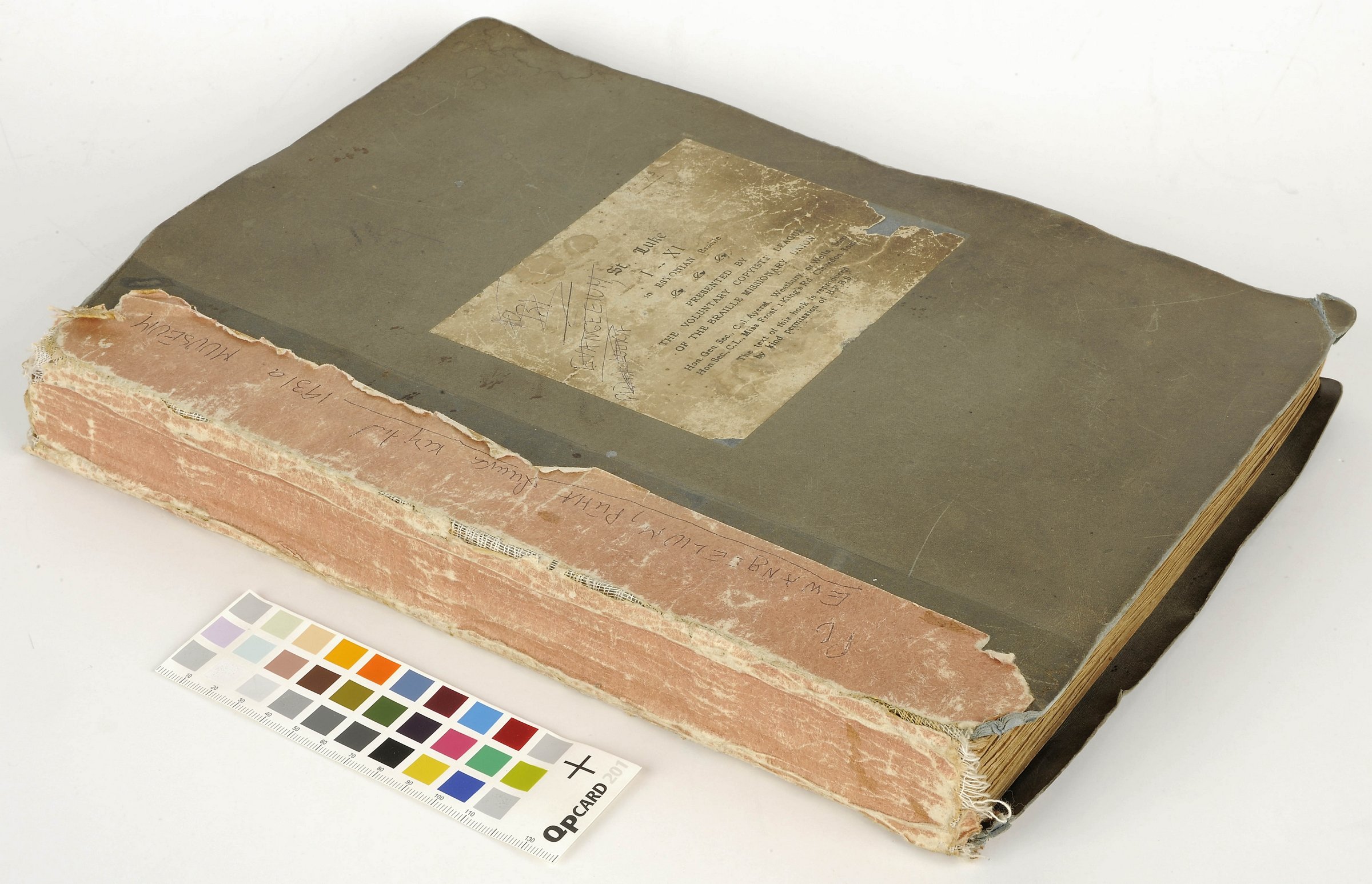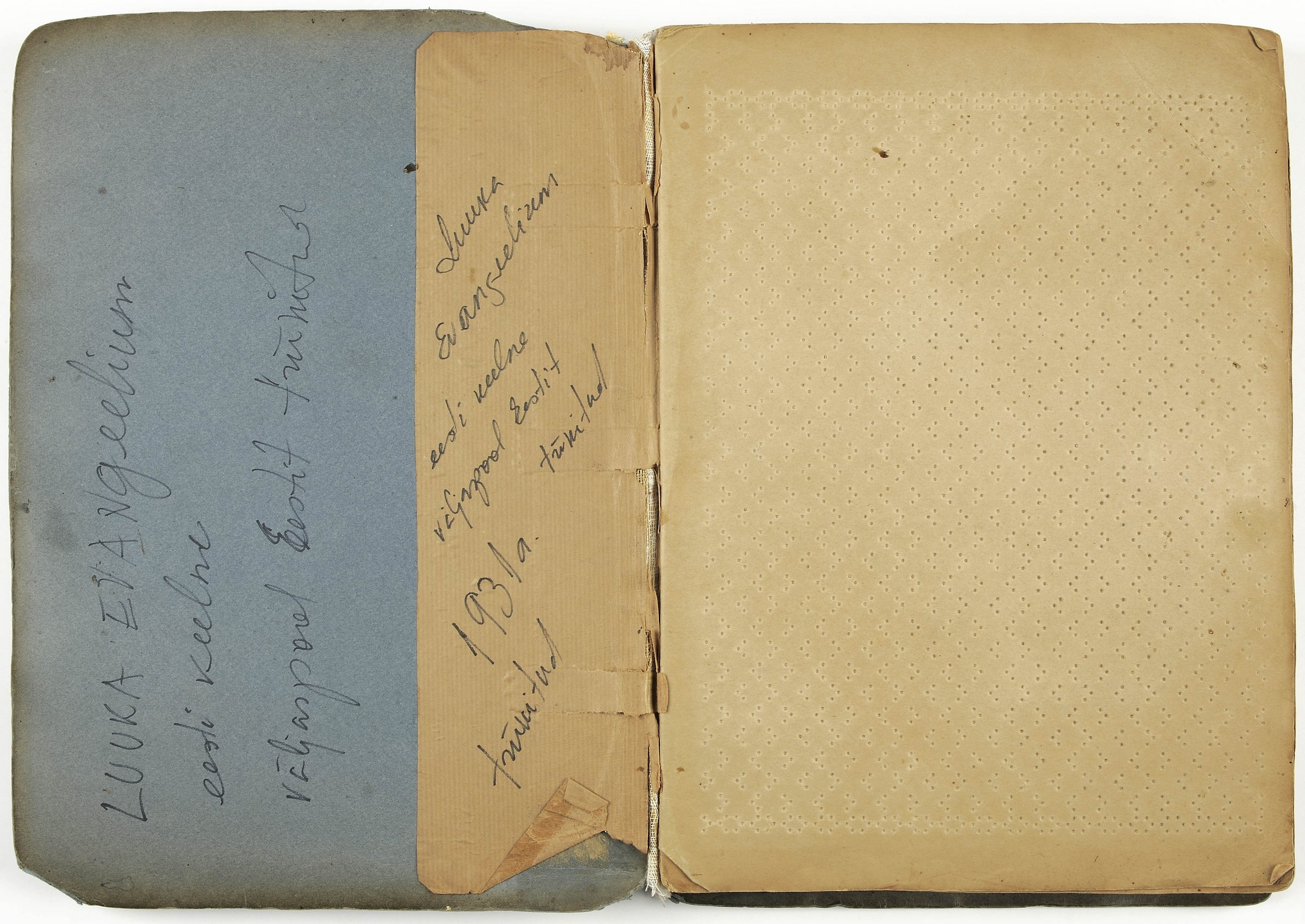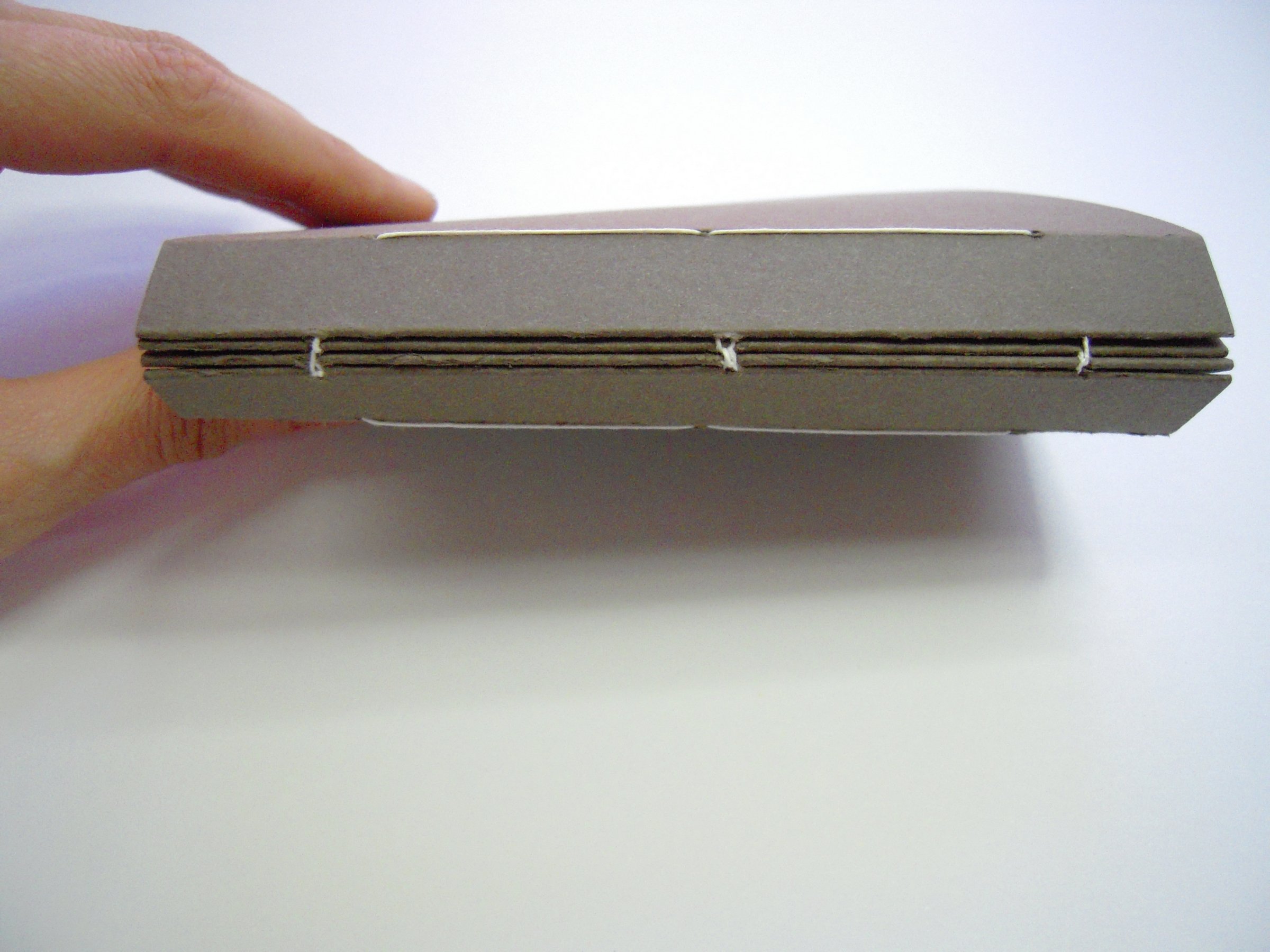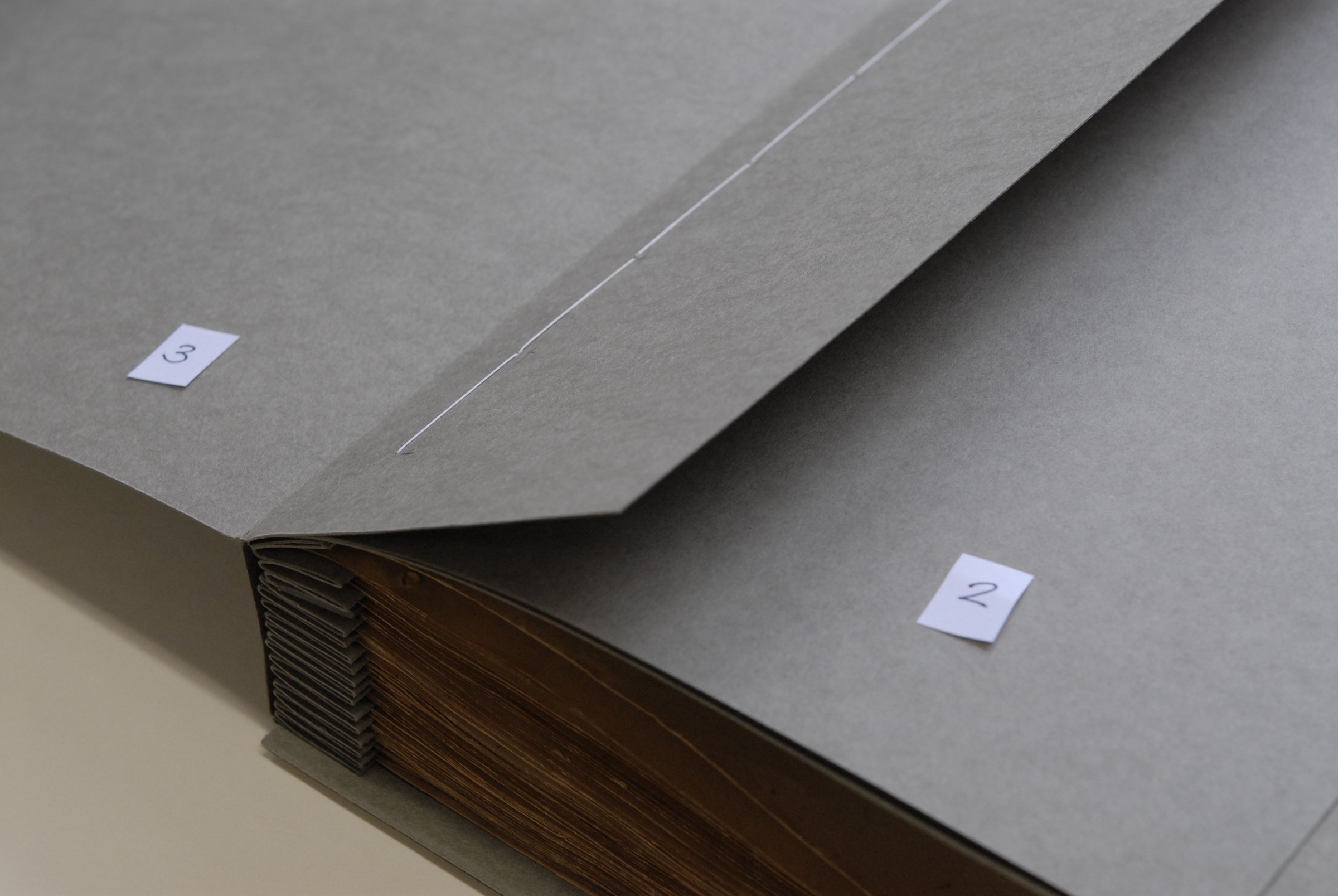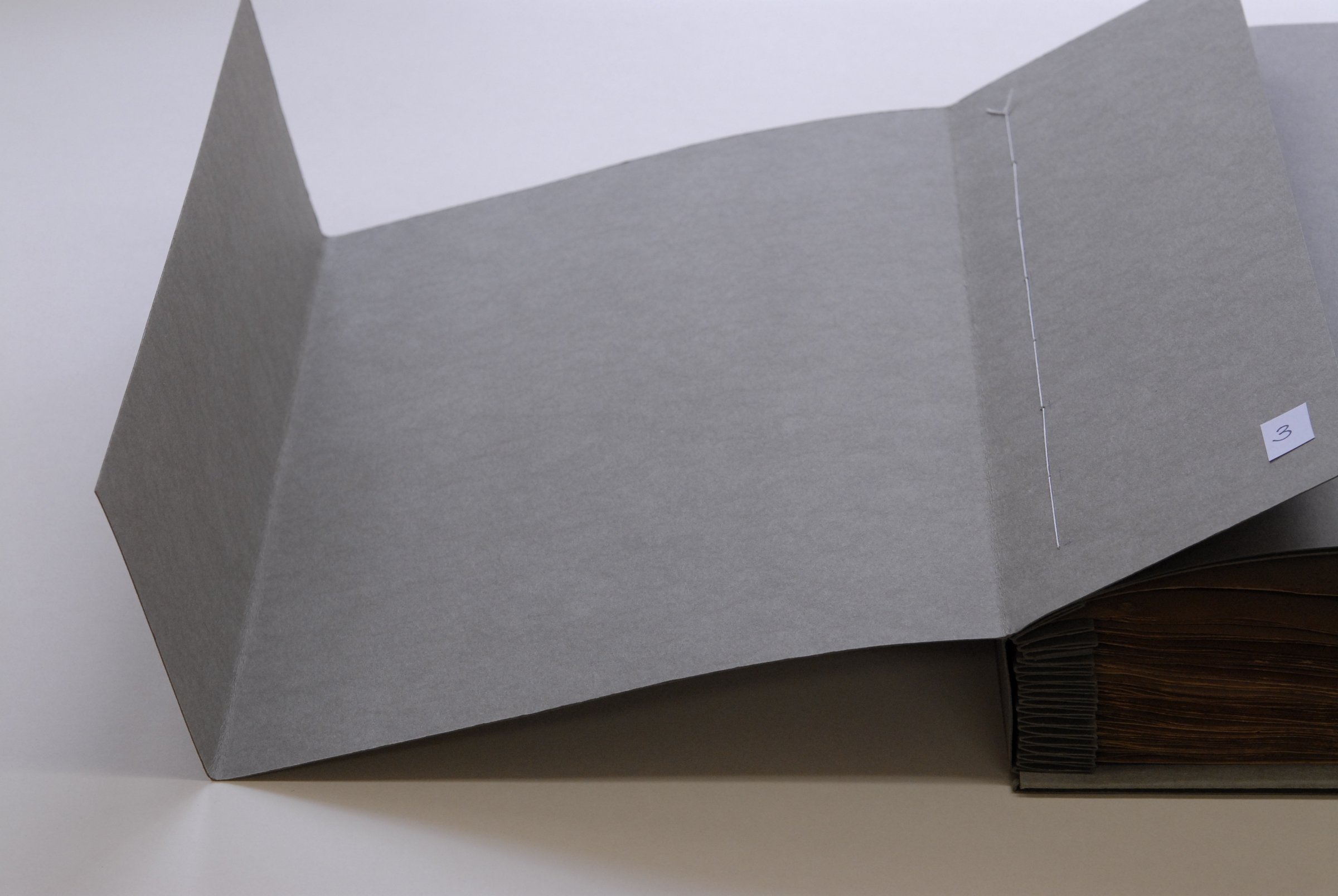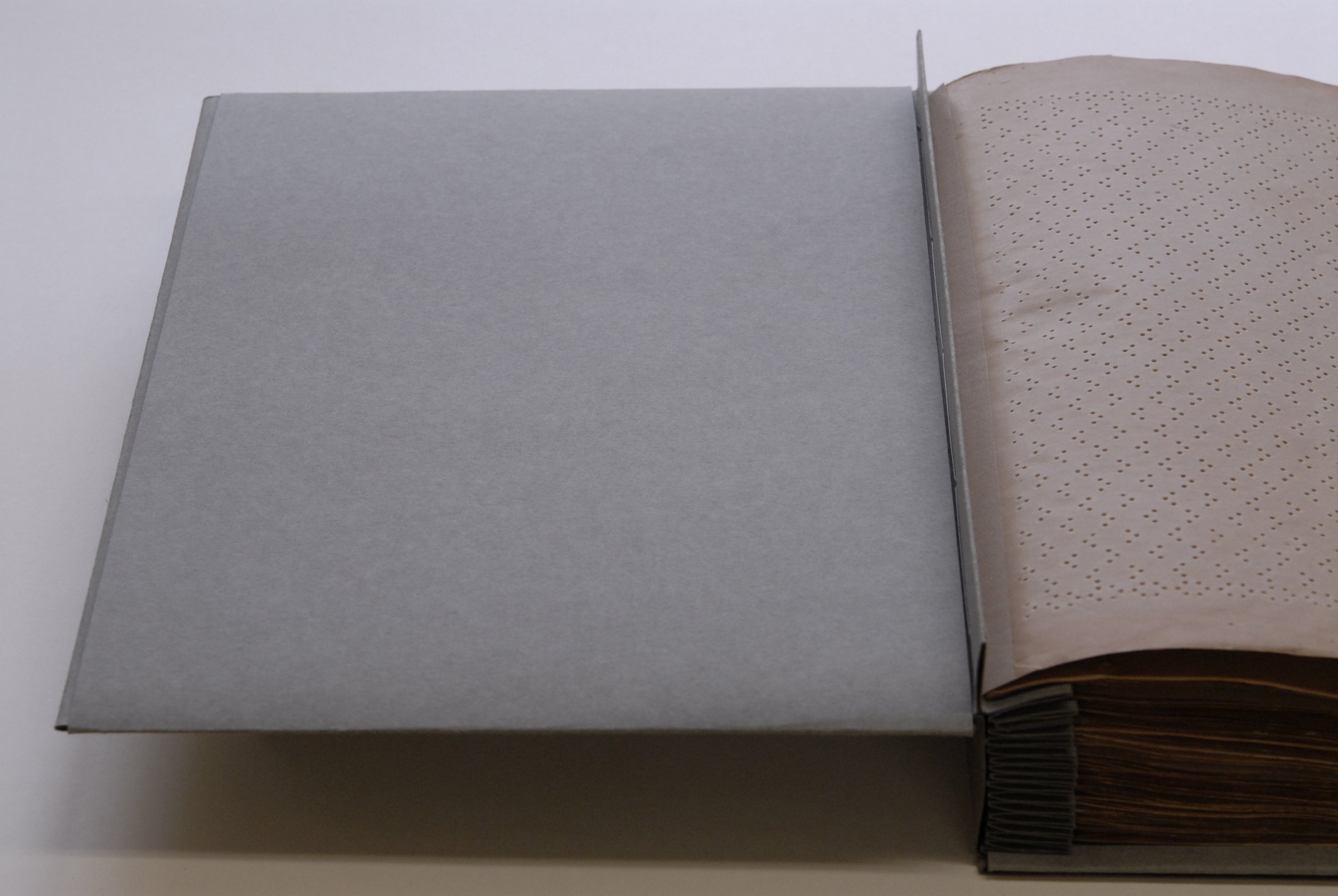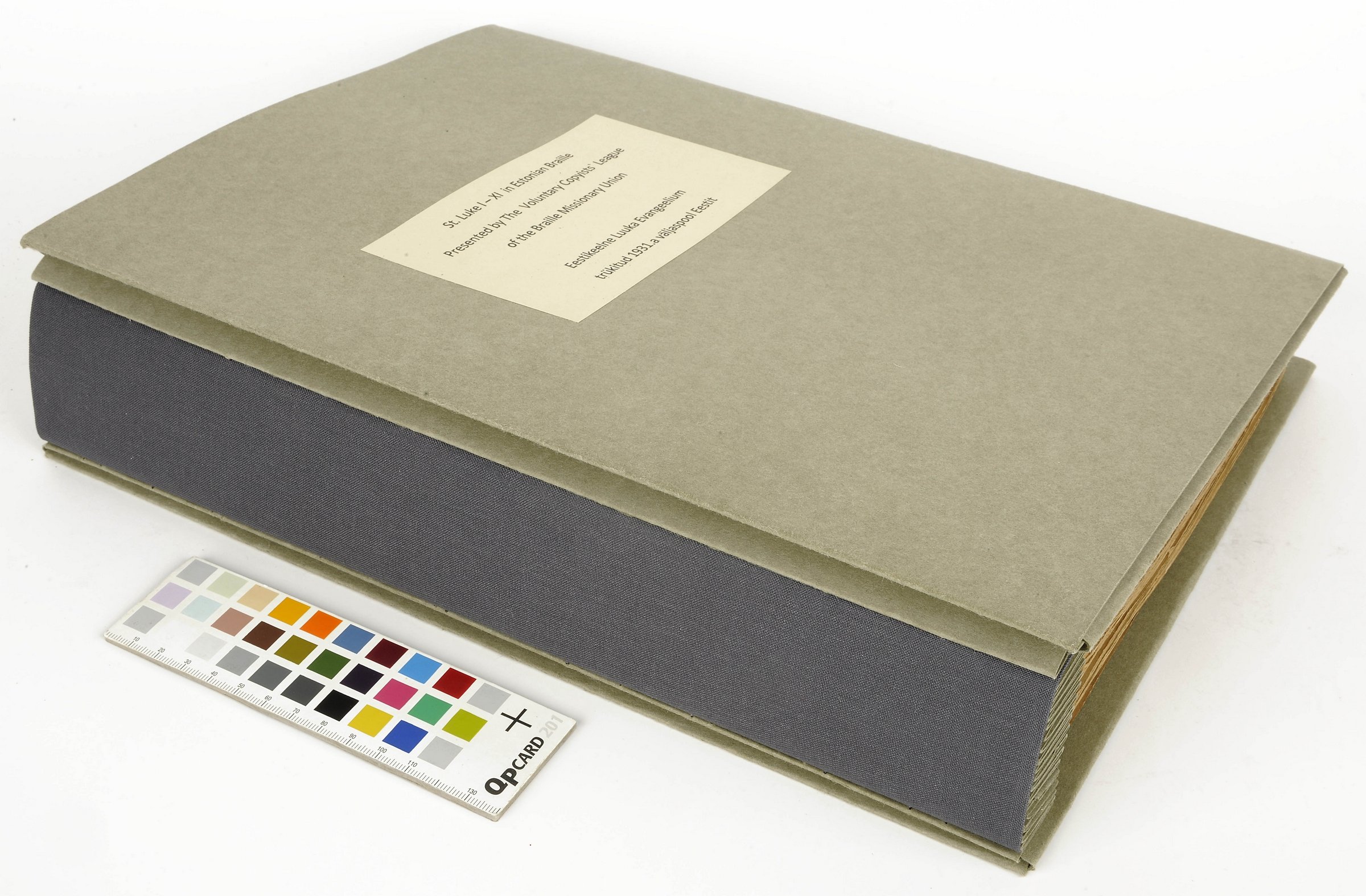SPACIOUS BINDING STRUCTURE – CONSERVING BOOKS FOR BLIND PEOPLE
Autor:
Tulvi-Hanneli Turo
Number:
Anno 2015
Category:
Conservation
Book: St. Luke I-XI In Estonian Braille, printed outside Estonia in 1931
Measure: 250 × 350 × 50 mm. Belongs to the Estonian Health Care Museum
Braille is a system of touch reading and writing used by blind persons. Embossed dots are evenly arranged in quadrangular letter spaces and they need space between each other and between the sheets. This is the reason why a special spacious binding structure was invented. A special glue-free concertina type binding for conserving Braille books is introduced. As the original construction of the book was weak and not spacious, a different binding structure was invented to protect the embossed letters.
Braille system was invented almost 200 years ago. While several types of written communication systems were tested during a ten-year period beginning in 1825, the one invented by a blind 15-year teenager – Louis Braille, was adopted. The Braille code in use today is virtually the same as it was in 1834. Louis Braille heard of a system of raised dots developed by a French army. It was called "night writing" and was used by soldiers to communicate after dark. Louis Braille refined the code to be based on a cell of six dots. A fingertip encompasses the entire cell unit with one impression and moves rapidly from one cell to the next.
How Braille books are printed.
Two stereotype plates are made for each page – referred to as one male and one female plate. In the male plate, each individual dot is raised much like the end result of the finished page printed in Braille. In the female plate, at the exact corresponding location, the dot is slightly smaller in diameter and fits inside the dot on the other plate. Then a sheet of paper is sandwiched between the two plates and clamped together. The paper is dampened before it is printed on so that it will stretch slightly without breaking during the printing process. After drying, the paper shrinks to form a hard and firm dot.
By the 1960s an operator, using a standard keyboard, typed the text onto computer key-punch cards. These cards were converted to a tape and then fed into a computer which translated the print into Braille on a second set of cards. Today Braille is printed on automated presses using a special heavy paper but printed dry. The development of the laser printer in the mid-1980s opened up a new world.
REFERENCES:
1. P. Luuka evangeelium (braille), 1931. Eesti Tervishoiumuuseum. Konserveerimistööde kaart EK-2012-55-L009.

